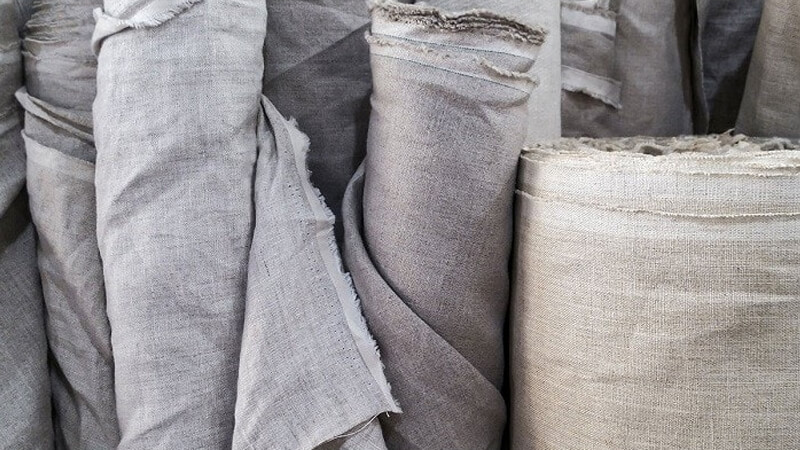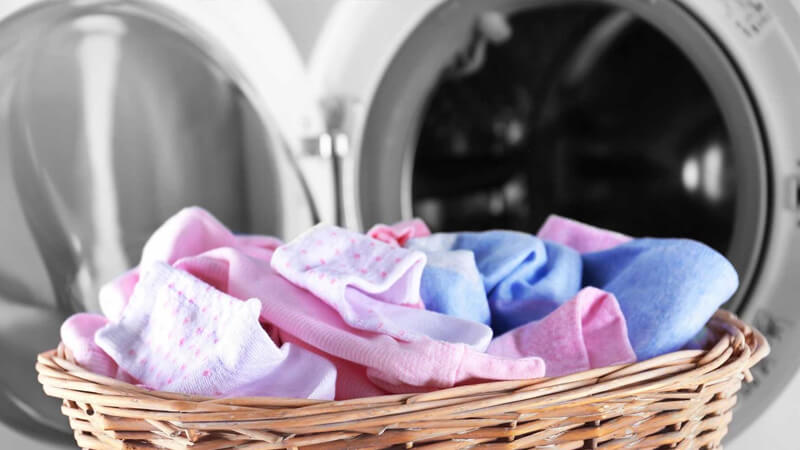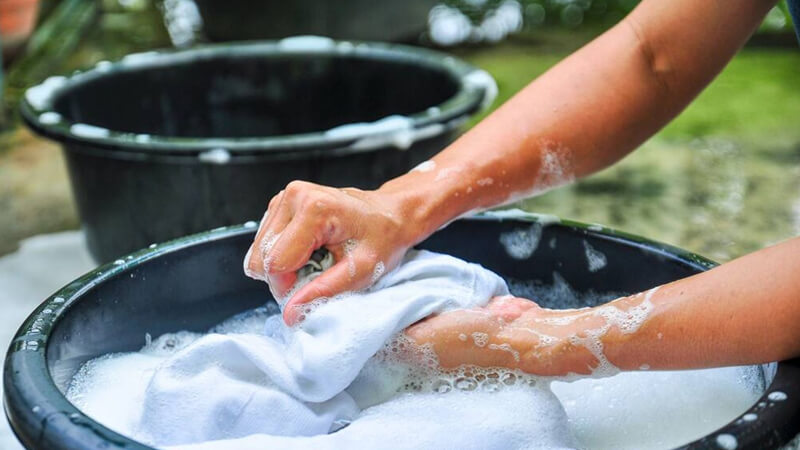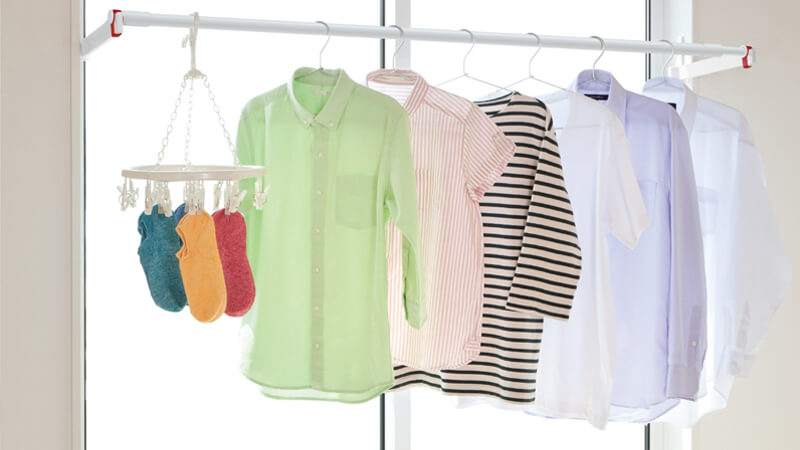Linen fabric has been gaining popularity as a clothing material of choice for many. This beautiful and durable fabric, however, can be prone to fading and wrinkling if not laundered and cared for properly. So, read on to discover the best practices for washing linen clothes to maintain their color and smoothness, as outlined in this article.
1 What is Linen Fabric?
Linen fabric is made from natural flax plant fibers and is sometimes referred to as flax fabric. Initially, linen fabric may feel a bit coarse, but it softens with each wash, becoming increasingly comfortable.
Linen is characterized by its strength, absorbency, and faster evaporation compared to cotton, providing a cool and pleasant feeling. However, linen lacks natural elasticity, making it prone to wrinkling.
For these reasons, linen fabric is a preferred choice in the textile industry for summer clothing in hot weather conditions.
 Linen fabric is strong, absorbent, and quick-drying
Linen fabric is strong, absorbent, and quick-drying
2 How to Wash Linen Clothes to Maintain Color and Smoothness
Being a natural fiber, linen fabric requires special care when laundering. Avoid using detergents with strong bleaching agents, and opt for cold or warm water instead of hot water to prevent color fading and fabric distortion. Additionally, there are specific considerations to keep in mind when machine washing or hand washing linen garments:
Machine Washing
- Always use a gentle wash cycle to prevent damage to the fabric’s structure.
- Select the maximum water level to allow adequate space for clothes to move freely and ensure thorough rinsing.
- Avoid overloading the machine with too many clothes at once.
- Sort laundry by weight, fabric type, color, and washing instructions (as indicated on the care label) to ensure effective cleaning.
- For embroidered garments, turn them inside out before washing to protect the embroidery.
 Use a gentle cycle and avoid overloading the machine
Use a gentle cycle and avoid overloading the machine
Hand Washing
- Hand wash lightly soiled garments to minimize potential damage.
- Handle with care, avoiding vigorous twisting, wringing, or scrubbing, as these actions can break the natural fiber structure.
- Rinse thoroughly to remove all soap residue before drying to prevent soap from causing fiber decay.
 Handle with care when hand washing, avoiding excessive force
Handle with care when hand washing, avoiding excessive force
3 Drying Linen Clothes
Before hanging linen clothes to dry, vigorously shake them out to remove as many wrinkles as possible. Instead of folding, hang them on hangers to minimize creases.
Linen fabric prefers cool and breezy conditions, so opt for air-drying indoors rather than hanging clothes in direct sunlight. If you choose to use a clothes dryer, set it to a low-heat setting or a linen-specific program, ensuring that the clothes remain slightly damp.
 Air-dry linen clothes naturally
Air-dry linen clothes naturally
4 Storing and Caring for Linen Clothes
Ironing Linen Clothes
It is best to iron linen clothes while they are still slightly damp, approximately 10% moisture content. If the garment is completely dry, lightly spritz it with water before ironing.
There is no need to iron both sides of the garment; ironing just one side will effectively remove wrinkles. For embroidered sections, iron the reverse side of the embroidery first, and then the front.
 Iron linen clothes while they are still damp
Iron linen clothes while they are still damp
Storing Linen Clothes
Avoid folding and storing linen clothes in drawers or closets. Instead, hang them on hangers after ironing to prevent deep creases. If space is limited and folding is necessary, roll the clothes instead of creating sharp creases.
Store linen clothes in a dry, well-ventilated area, avoiding damp and musty conditions that can lead to odor and mildew issues.
These comprehensive tips on washing and caring for linen clothes will help you maintain their color and smoothness. We hope you find this information valuable and useful.


































